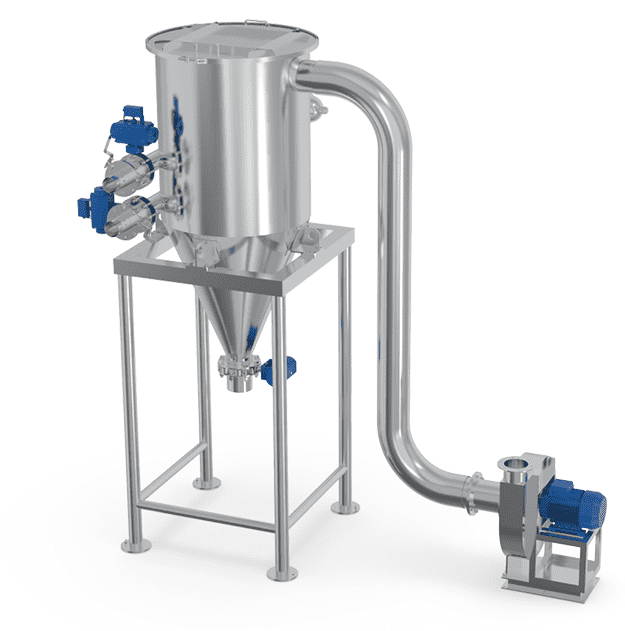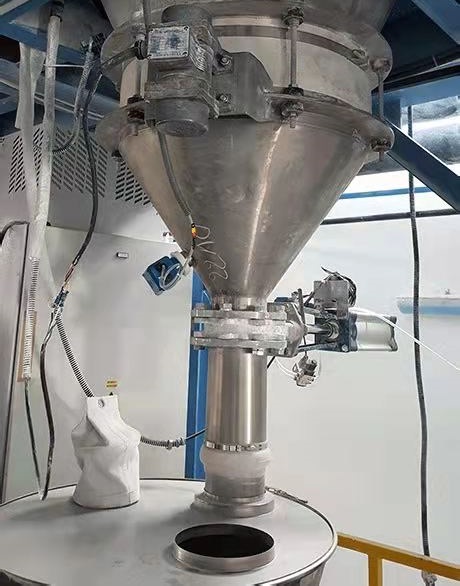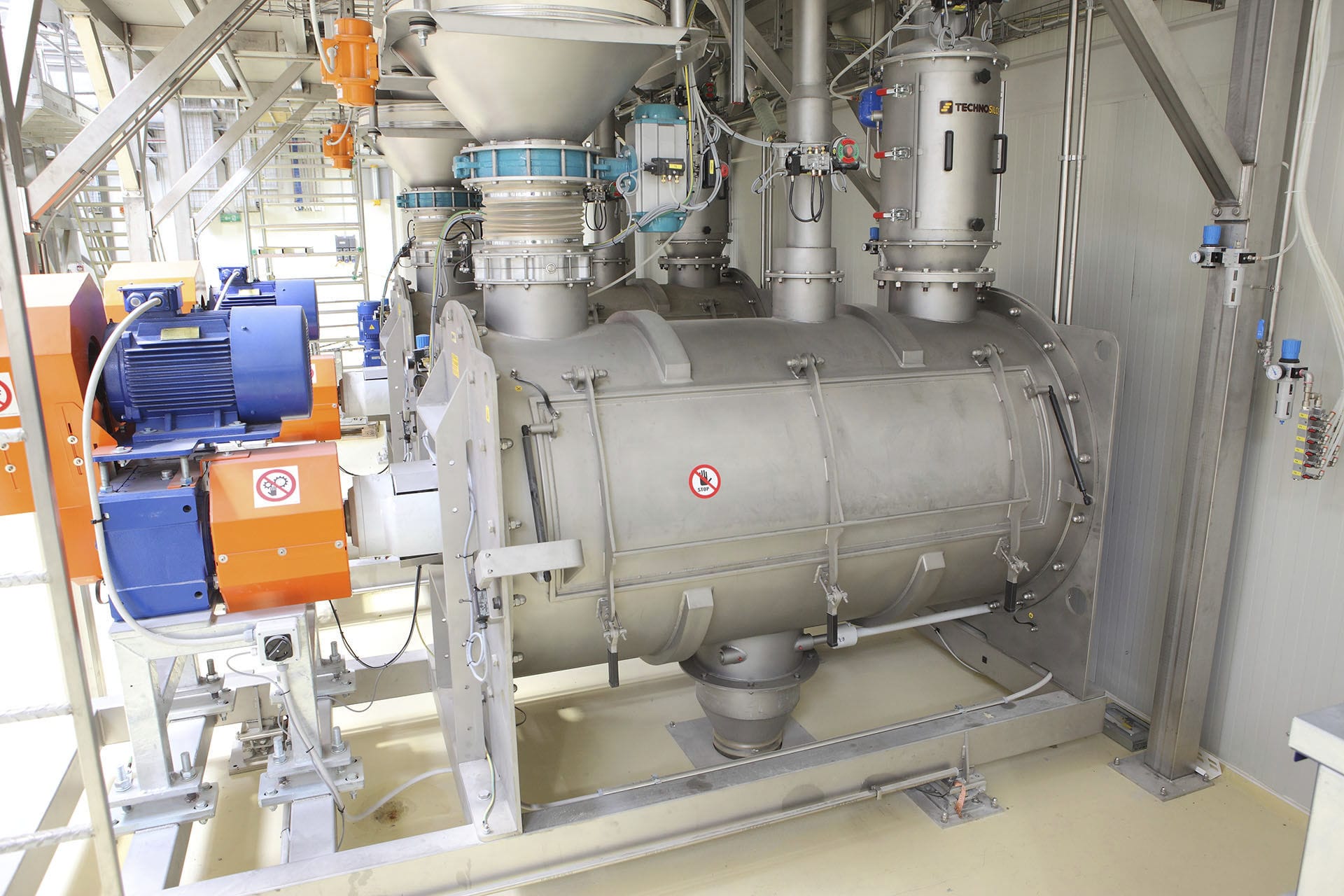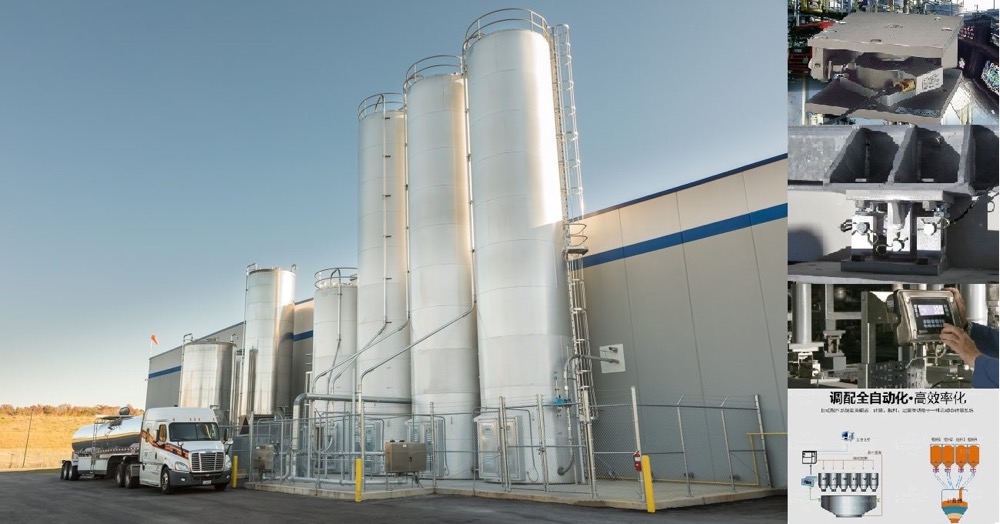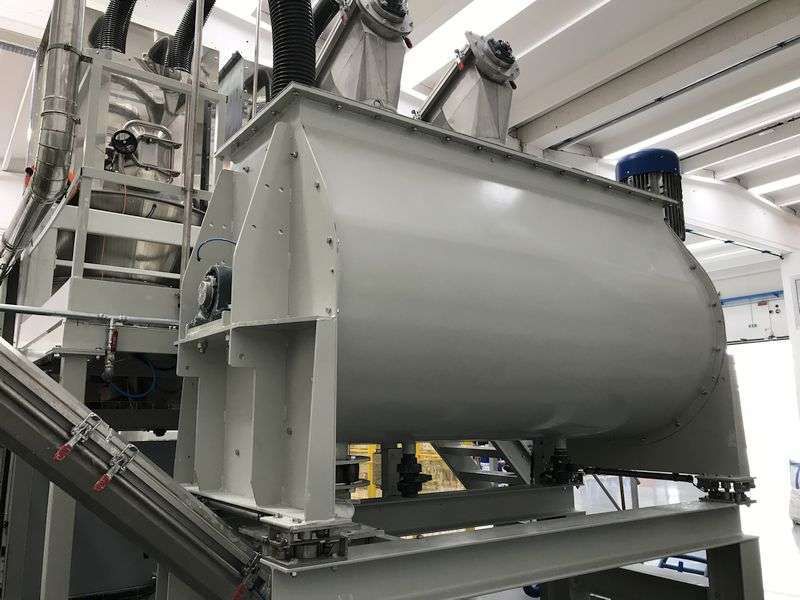

 2020.02.10
2020.02.10Summary:The batching machine is obtained by mixing limestone and coke and burning it in a lime kiln. The daily processing capacity of a single lime kiln can reach nearly dry tons of limestone.In the past, PLC control with touch screen was used. With the continuous development of informatization, it has now been changed to DCS control.
The batching machine is obtained by mixing limestone and coke to be burned in the lime kiln, lime kiln, a single lime kiln can handle up to nearly dry tons of limestone per day. PLC control with touch screen was used in the past, and with the continuous development of information technology, it is now all changed to DCS control.
1 process flow
Limestone and anthracite from the raw material field are screened and sent to the limestone and anthracite silo by belt conveyor. Limestone and anthracite are discharged from the bottom of the silo, and the limestone feeder and anthracite feeder are sent to the limestone scale and anthracite scale for weighing. Feeding hopper running to the bottom of the kiln, by its own weight pressure down the lever, through the mechanical interlock, so that the stone and coal hopper tiger mouth gate open, after weighing the stone, coal through the mixing chute into the hopper, the hopper upward 10s, the stone and coal feeder to start charging again. Upper hopper by the winch along the track traction to the top of the kiln, balancing bowl down to the bottom through the mechanical interlock to open the material valve, so that the mixture into the bell cap rotating hopper. Upper hopper down action 5s, by the DCS control fabricator according to the 6-point fabric, so that the rotating hopper rotation to a given position to stop. The hopper runs to the bottom of the kiln and presses down the lever, which opens the bellcap by mechanical interlocking, so that the mixture is evenly spread into the kiln through the split stone. Lime kiln furnace system has a considerable number of ancillary equipment, in order to cooperate with the normal operation of the lime kiln, such as the role of uniformity of the material fabricator, transport kiln reaction products out of the ash transportation system.
2 Lime Kiln DCS Collective and Distributive Feeding System
As the limestone and coke mixing ratio is appropriate or not, is a critical factor affecting the quality of the lime kiln process. Material coke content ratio is too small, will cause the limestone decomposition is not sufficient, the kiln gas supply is insufficient, the quality of the milk of lime; limestone raw material content is too low, while the coke content is too high, not only a waste of raw materials, but also will make the limestone has not had time to chemically decompose has been excessive coke combustion of high temperature sintering and accumulated in the bottom of the kiln to form a very hard sintered material, resulting in serious production accidents. Therefore, the lime kiln control directly affects the output and quality of the kiln gas, as well as energy consumption and equipment life. As the original PLC batching equipment only with touch screen, the operation is very inconvenient, the system is independent without networking, the data can not be transmitted remotely. Moreover, the control module cannot be redundant, cannot be hot-swapped with electricity, and has to be shut down for maintenance in case of failure, which is unable to adapt to the requirements of continuous production and the management of enterprise informationization. We make full use of the existing basic platform, switch to a computer DCS system to achieve centralized optimization of the lime kiln control, to solve the bottleneck constraints of the lime process on the entire production.
3 System control program
Lime process DCS batching system is configured with three operator stations, with 100M fast industrial Ethernet connection between the stations, redundant system network configuration, redundant power supply and main control unit of the on-site control station. The software design is based on the coexistence of on-site manual control, manual control in the main control room and automatic control in the main control room, and various interlock protections are set up. Each kiln is controlled independently, and the batching and loading controls are 3 sets of independent mixers. Even if one kiln fails, it will not affect the work of the other 2 kilns The main control operation screen realizes the manual and automatic interlocking control of kiln materials weighing, batching, feeding, ash discharging, ash transport and other supporting equipment.
3.1 Control mode
1) Local control: when selecting "local" mode, the computer can not be operated, and has to be operated on site.
2) DCS control: When selecting the "DCS" mode, the computer can be controlled manually and automatically.
Manual control: press up, to the top limit automatically stop; press down, to the bottom limit automatically stop.
Automatic control: input batch, stone weight and proportion setting, press start after displaying "ready".
Coal set weight a stone set weight X set ratio/100
3.2 Feeder system interlock automatic control
Limestone and coke according to the set weight and the ratio of the two for batching, single batching time not more than 20s, batching is completed, the first time to press the start, after a delay of 10s, the feeder trolley from the middle of the total stop position began to go down to the bottom of the parking feed switch, through the mechanical linkage, after weighing the stone and coal after mixing and discharge into the feeder trolley, a delay of 12s, the trolley on the upward; upward 10s to start the feeder, trolley to reach the top of the dense parking dump switch to stop Arrive at the top of the dense stopping pouring switch stops, and automatic pouring, the trolley stops 12s after the beginning of the downstream; downstream 5s after the start of the fabric fabricator fabric, fabricator each running time according to the program design of the 6 points of fabric, that is, 0.5, 7, 14, 21, 28, 35s, feeding trolleys downstream every time according to the rules of the action of the 1 point of the fabric run. Dosing, feeding, feeding, pouring, cloth each action is coordinated with each other, according to the programmed automatic completion. Continuous cycle, until the number of feeding times equal to the set batch, the trolley reaches the center of the total stop position stop.
Kiln feeding hopper door opening and closing action is realized by feeding trolley mechanical linkage, the use of hopper door opening and closing reflected in the weight of the material weighed on the relationship between each time the beginning of the material before judging the weight of the hopper hopper door to know whether to close the general is not closed when there will be a large negative number, and experience set up the parameters of the material spreading for comparison, the trolley upstream, the tiger's mouth is not closed the weight of the material will be less than the material spreading set up to indicate that the material is spread! This can automatically determine whether the feeding process is normal. Once the abnormality will terminate the feeding, and issue an alarm, prompting the operator to carry out troubleshooting to avoid a large amount of material spilling, to ensure the safety of the system feeding process.
4 Weighing instrument and DCS communication
We carry out technical modification to the existing stone and coal weighing control system, add 6 sets of IND560, the latest introduction of powerful and superior performance weighing control terminal, 1#, 2# kiln in 18 stations, 3# kiln in 19" station. The weighing terminal selects PROFIBUS-DP communication mode to connect with DCS. Since PROFIBUSDP is a high-speed and low-cost communication for equipment-level mixer and decentralized IO communication, the use of PROFIBUS-DP can replace the 4~20mA signal transmission, resulting in faster data transmission and higher accuracy.
There are three types of data transmission for weighing instruments: DDivisions are transmitted as display divisions; @FloatingPoint is transmitted as 32-bit floating point numbers; and 3Integer is transmitted as 16-bit integer numbers. We choose Integer to 16-bit integer transmission type, the computer sends a signal to fetch the number, the instrument receives the signal to send data. Refer to IND560PLCInterfaceManual (PLC interface manual) to write the control code.
4.1 Automatic Tare
IND560 supports automatic tare function, by tare, the net weight of the material can be obtained. The program design winch up after 7s by the DCS CZ16 and CZ26 signal to the stone scale and coal scale automatic tare.
4.2 Complementary code application
In the pouring process of material weighing will often appear negative, such as just after the pouring of material, hopper nozzle is not closed when the weighing instrument will show a negative value. In the computer control system, the values are always expressed (stored) in complementary codes. The main reason is: the use of complementary code, the sign bit and other bits can be handled in a unified way; at the same time, subtraction can also be handled by addition. To find the complement of a given value, there are two cases:
1) The complement of a positive number: the same as the original code. If the sign bit of the complement is "0", it means that it is a positive number, and the other code is a complementary code.
2) the complement of a negative number: the sign bit is 1, that is, if the sign bit of the complement is "1", indicating that it is a negative number, then it is necessary to invert the rest of the bits for the absolute value of the number of the original code according to the bit; and then the whole number plus 1.
5 advance control algorithm
Feeder in the amount of advance in the air after the closure of the door refers to the flying material, feeding system using the motor to drive the eccentric mechanism to produce vibration of the material from the silo to add to the hopper, due to inertia when adding material, weighing must be in the arrival of the set target weight before stopping the material motor. The difference between the target weight of the material and the weight of the material at the time of stopping the material is the advance in the feeding control. (Material advance = weight of the material after stopping - weight of the material at the time of stopping)
The amount of advance is not fixed, subject to the influence of many factors, such as the measurement of the dosage system running fast or slow, the speed of the material falling, the size of the material particles, the viscosity of the material has a close relationship with other factors. Feeding control in advance must follow the real-time situation of the mixer automatically adjusted to ensure the accuracy of the weighing.
In advance of the amount of algorithm model first of all on the signal acquisition digital filtering preprocessing, using recursive average filtering.
Every time the program system calculates the advance quantity, it refers to the previous discharging historical data, thus obtaining the influence coefficients representing the speed of the material falling, the size of the particles, the degree of viscosity and other factors, automatically adapting to the operating environment, and obtaining the accurate advance quantity. When the machine is just started, the initial value of the preset advance is not necessarily close to the actual value, but after several cycles of operation, it will be automatically adjusted to adapt to the operating environment, and the system will soon obtain the accurate advance without manual correction.
6 Over-limit and fault interlock protection
Computer interlock control settings screen, the operator just click on the computer's "interlock input" button, you can realize the interlocking protection of the magic, according to the actual needs of the control value can also be modified at any time.
The following situations often occur in the loading system:
1) the trolley up for batching, the weight of the stone is not incremental, the reason may be the stone hopper vise mouth is not closed, or the mouth of the material is blocked, or the empty warehouse, electric failure, etc., need to interlock the batching stop to check and deal with.
2) After the hopper is pressed to the bottom for 7s, the weight of the material scale remains unchanged or does not change much, the reason may be that there is a large piece of material stuck in the nozzle of the tiger or the steel wire rope is broken, and it is necessary to interlock and stop batching.
Program in the hopper in the end 7s after the net weight of limestone and 100 for comparison, the net weight of coke and 10 for comparison because in the end after the beginning of pouring, according to the normal 7s should be basically finished, and if the weighing of the stone is still 100kg, coke is still 10kg, it is certainly abnormal, it may be caused by the above reasons.
7 Ash interlock control
Ash output control screen can realize the control of ash transportation system.
In case of failure: if the bucket elevator stops, the whole system stops; if the chain machine stops, the ash dispenser and ash dispenser turntable stops. The start and stop of bucket elevator and chain machine have a linkage relationship, and the chain machine is automatically started after a delay of 5s after starting the bucket elevator, and the stop of bucket elevator causes the chain machine and the equipments at the back to stop running. It is very convenient to display the running status, operate and monitor.
To summarize, due to the DCS using multiple computers to share the functions and scope of control, so that the processing capacity and system security is greatly improved. 2008 began to carry out technological transformation, after our continuous research and improvement, the system fully meets the requirements of the design and control accuracy. And it can transmit the lime kiln operation data to the general control and production information network. Its research results provide valuable experience for the expansion of the mixer of the new lime kiln.


















